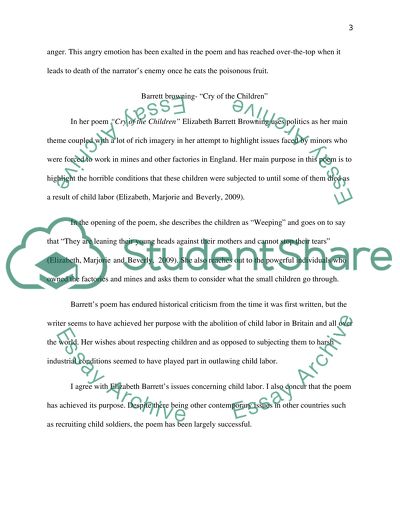Blake's A Poison Tree and Barrett Browning's Cry of the Children, Essay. Retrieved from https://studentshare.org/literature/1622021-blakes-a-poison-tree-and-barrett-brownings-cry-of-the-children
Blake's A Poison Tree and Barrett Browning'S Cry of the Children, Essay. https://studentshare.org/literature/1622021-blakes-a-poison-tree-and-barrett-brownings-cry-of-the-children.


